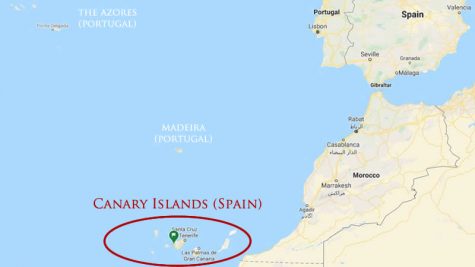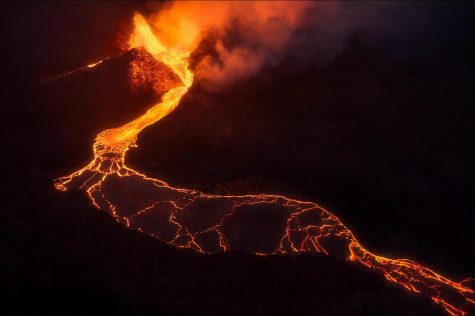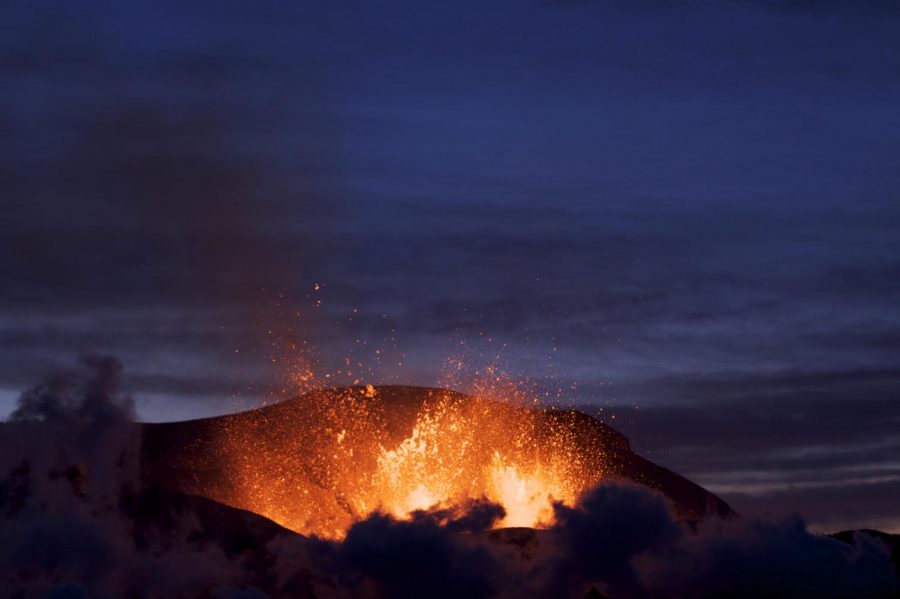An Explosive Tragedy in The Spanish Canary Islands
The eruption of Cumbre Vieja
October 1, 2021
On Sunday, September 19th, the volcano Cumbre Vieja erupted in the Spanish Canary Islands. Thousands of homes have been destroyed due to the lava, and evacuations have begun across the whole island. It has currently been 4 days since the eruption took place and is predicted by Involcan (the Canary Islands Volcanology Institute) to last up to 84 more days, with over 190 hectares (470 acres) now affected by the lava. Luckily for the people of La Palma, the next few weeks are predicted to be mainly effusive rather than explosive regarding the eruption, meaning it is mostly lava that escapes, instead of rocks and broken fragments of the volcano that skyrocket into the atmosphere.

It has been 50 years since the last eruption of the Cumbre Vieja, the last one occurring in 1971. The volcano is located in the south of the La Palma island, found off the coast of northwestern Africa which harbors around 80,000 people, not including the many tourists who decide to visit the Spanish Canary Islands every year. Despite the tens of thousands of residents, only around 7,000 have been evacuated as of Friday, the 24th. Currently, the villages of Tacande and Tajuya have evacuated completely due to the emergence of two new vents and increasingly unstable conditions. There have been several reports of pyroclastic material (a cloud of ash and lava fragments carried through the air) and vapor. getting shot from these new vents, and the conditions only seem to be getting worse.
Flights to and from the island have been canceled, the damages have exceeded 400 million dollars already, and with the active flow of lava spreading every hour, the costs are expected to rise dramatically. In recent events though, the lava has been seen to be slowing down to 13 meters per hour in relation to the previous 2,300 feet per hour. As the lava has gotten thicker, it has slowed down remarkably, but still leaves an open threat to possible tsunamis. This is leading authorities to believe that the lava is going to fan out on land instead of reaching the sea, a thought previously discussed.

Why is the lava reaching the sea a bigger hazard than remaining on land? If it comes to the point where the water and lava meet, there could be thermal shock leading to explosions due to the two elements coming in contact. The difference in temperature between the two elements causes complications, as well as the chemical reactions that could pose a threat from the mix of molten rock and seawater.
The lava flow has not only caused devastation on physical land, but is reported to cause long-term effects on weather and air pollution, ultimately creating problems regarding respiratory illnesses. Because of all the ash and toxic gas floating around the area, it has been deemed unsafe for residents and could worsen existing conditions like asthma.
The La Palma island is one of the smallest among the Spanish Islands, so the terror among people is great. There is reported to be a snow of ash falling heavily, and one can only hope that somehow, this volcano calms and poses no more danger than it already does. There are volunteers rushing to assist those La Palma residents in need, but little can be done from the outside. If anything else, keep the residents of La Palma in your best wishes, they need it more than ever.











